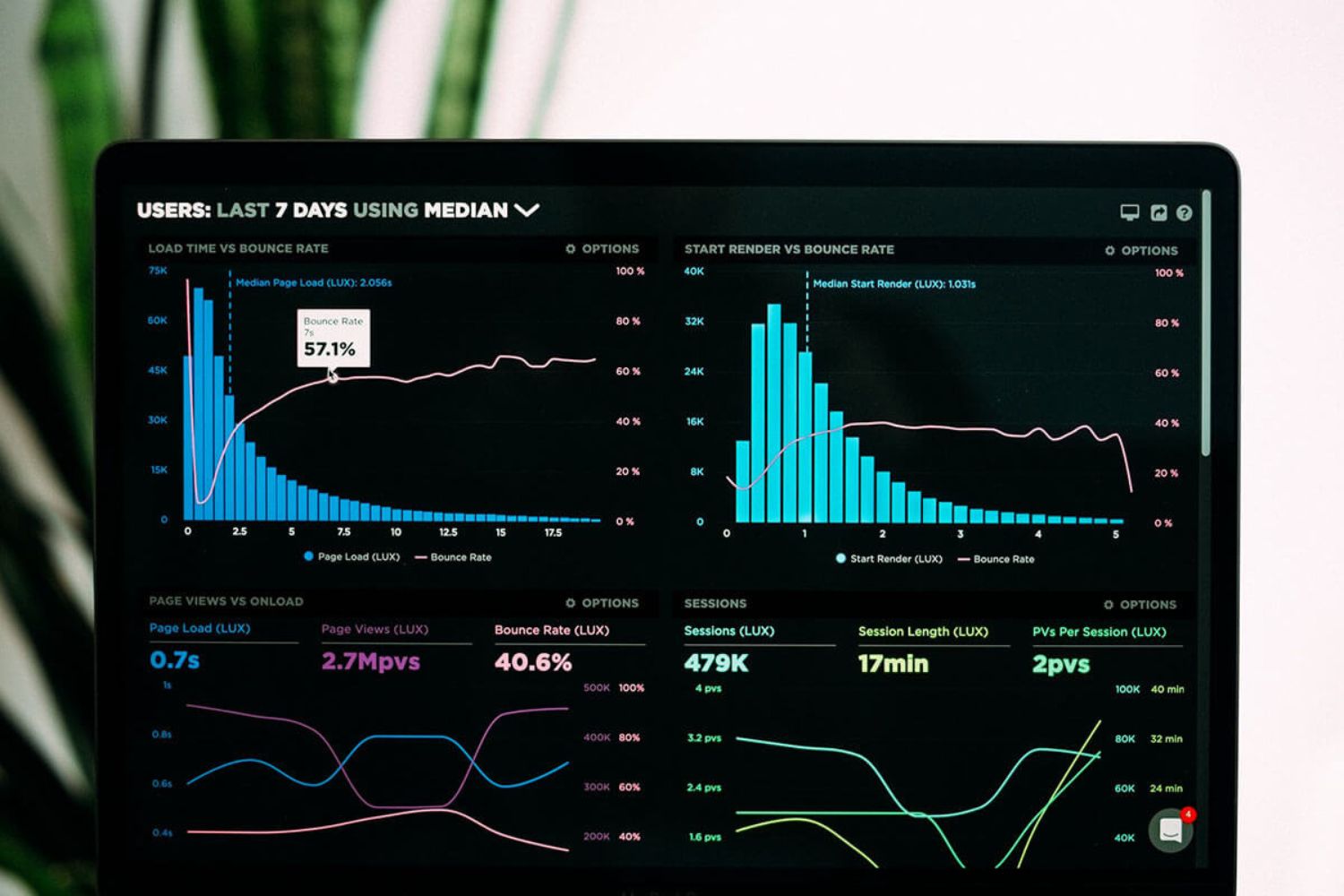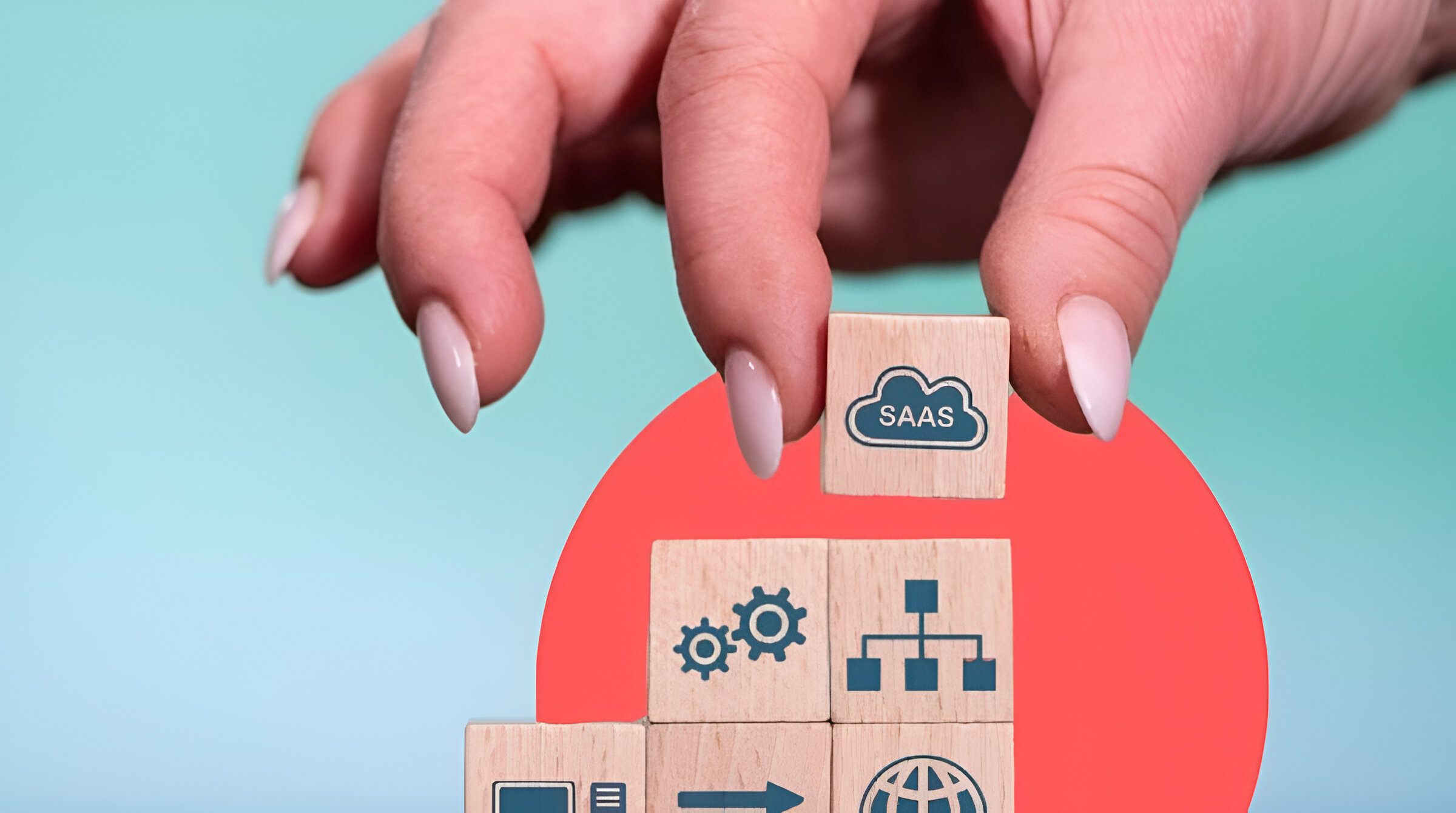Introduction
Welcome to the world of SaaS (Software as a Service), where businesses rely on cloud-based applications to enhance their productivity and streamline their operations. As a SaaS company, it is vital to not only acquire new customers but also understand the cost associated with acquiring them. This is where Customer Acquisition Cost (CAC) comes into the picture.
Customer Acquisition Cost, commonly known as CAC, is a crucial metric for SaaS businesses that helps determine the amount of money spent on acquiring a new customer. It provides valuable insights into the effectiveness of a company’s marketing and sales efforts and helps in making informed business decisions.
Understanding CAC is essential for SaaS businesses for several reasons. Firstly, it helps in optimizing marketing budgets by identifying the most cost-effective channels and campaigns. Secondly, it assists in setting realistic revenue targets and forecasting business growth. Lastly, CAC serves as a key performance indicator (KPI) for investors, potential buyers, and stakeholders, providing them with a measure of a company’s efficiency and scalability.
To calculate CAC, businesses need to consider various components, including marketing expenses, sales costs, and the number of customers acquired within a specific time frame. By analyzing these factors, SaaS companies can make data-driven decisions and improve their customer acquisition strategies.
By understanding and effectively managing CAC, SaaS businesses can optimize their acquisition efforts, reduce costs, and ultimately drive sustainable growth. In this article, we will dive into the formula for calculating CAC, the components involved, and strategies to reduce CAC. So let’s get started on this journey to mastering CAC and unlocking the full potential of your SaaS business!
What is CAC?
Customer Acquisition Cost (CAC) is a metric that measures the average cost a company incurs to acquire a new customer. It provides valuable insights into the effectiveness of a company’s sales and marketing efforts by analyzing the expenses associated with acquiring customers.
CAC is an essential metric for SaaS businesses as it helps determine the financial viability of acquiring new customers and the return on investment (ROI) for marketing and sales activities. By calculating CAC, companies can better allocate their resources and optimize their customer acquisition strategies.
To calculate CAC, you need to consider various costs involved in acquiring new customers. These costs typically include marketing expenses, such as advertising, content creation, social media campaigns, and email marketing. Additionally, sales costs, such as salaries, commissions, and bonuses of sales teams, should be accounted for.
CAC can be calculated by dividing the total costs incurred on acquiring customers by the number of customers acquired during a specific time period. For example, if your company spends $10,000 on marketing and sales activities in a month and acquires 100 new customers, your CAC would be $100 ($10,000 / 100).
It’s important to note that CAC should be analyzed in conjunction with other financial metrics, such as customer lifetime value (CLTV). CLTV measures the revenue generated from a customer over their entire relationship with the company. By comparing CAC with CLTV, companies can determine the profitability of their customer acquisition efforts.
Monitoring CAC allows businesses to identify the most cost-effective acquisition channels and campaigns. By analyzing the data, companies can optimize their marketing budgets and focus on strategies that yield the highest ROI. This leads to increased efficiency in customer acquisition and helps businesses attract high-quality customers who are likely to generate higher CLTV.
Calculating CAC is just the first step. To make the most of this metric, businesses should continually monitor and analyze it over time. By tracking changes in CAC, companies can identify trends and anomalies and adjust their strategies accordingly. This proactive approach enables companies to stay ahead of the competition and drive sustainable growth.
Why is CAC important for SaaS?
Customer Acquisition Cost (CAC) plays a crucial role in the success of SaaS businesses. It provides valuable insights into the financial health and efficiency of a company’s customer acquisition efforts. Here are some key reasons why CAC is important for SaaS:
1. Optimize Marketing Budgets: By calculating CAC, SaaS businesses can determine which marketing channels and campaigns are the most cost-effective. This enables them to allocate their marketing budgets more efficiently, focusing on strategies that yield the highest ROI. By optimizing their marketing spend, companies can acquire more customers for the same budget or reduce costs while maintaining customer acquisition levels.
2. Set Realistic Revenue Targets: Understanding the cost of acquiring customers helps SaaS businesses set realistic revenue targets. By factoring in CAC, companies can determine the number of customers they need to acquire to achieve their revenue goals. This data-driven approach ensures that businesses have actionable targets and can adjust their strategies if necessary.
3. Forecast Business Growth: CAC is essential for forecasting future business growth. By analyzing historical CAC data and trends, companies can make informed projections about their customer acquisition costs. This information is valuable for financial planning, identifying growth opportunities, and attracting potential investors.
4. Measure Efficiency and Scalability: CAC serves as a key performance indicator (KPI) for investors, potential buyers, and stakeholders. It provides an insight into how efficiently a company is acquiring customers and how scalable its acquisition processes are. A lower CAC indicates that the company is more efficient in acquiring customers, which can lead to increased profitability and sustainable growth.
5. Optimize Sales and Marketing Strategies: By analyzing CAC, SaaS businesses can identify areas for improvement in their sales and marketing strategies. They can pinpoint which channels and campaigns are driving the highest customer acquisition and invest more in those areas. Furthermore, by analyzing CAC in conjunction with other metrics, such as customer lifetime value (CLTV), companies can optimize their strategies to attract high-value customers with a higher CLTV.
6. Competitive Advantage: Monitoring and managing CAC gives SaaS businesses a competitive advantage. It allows them to stay ahead of the competition by identifying changing market dynamics and adjusting their strategies accordingly. By continuously optimizing their customer acquisition efforts, companies can attract more customers at a lower cost, giving them a significant edge in the market.
Overall, CAC is of utmost importance for SaaS businesses as it helps optimize marketing budgets, set realistic revenue targets, forecast business growth, measure efficiency and scalability, optimize strategies, and gain a competitive advantage. By effectively managing CAC, SaaS companies can drive sustainable growth and achieve long-term success in the dynamic SaaS landscape.
Formula for calculating CAC
Calculating Customer Acquisition Cost (CAC) is essential for SaaS businesses to gain insights into their customer acquisition efforts. The formula for calculating CAC is relatively straightforward:
CAC = Total Marketing and Sales Costs / Number of Customers Acquired
The numerator of the formula represents the total marketing and sales costs incurred by the company within a specific time period. This includes expenses associated with marketing campaigns, advertising, content creation, social media, email marketing, as well as sales team salaries, commissions, and bonuses.
The denominator of the formula represents the number of customers acquired during the same time period. This can be calculated by subtracting the number of existing customers at the beginning of the period from the total number of customers at the end.
Once you have the values for the total marketing and sales costs and the number of customers acquired, you can divide the former by the latter to get the CAC.
For example, let’s say that in a month, a SaaS company spends $10,000 on marketing and sales activities and acquires 100 new customers. The CAC would be calculated as follows:
CAC = $10,000 / 100 = $100
This means that, on average, the company is spending $100 to acquire each new customer.
It’s important to note that CAC can be calculated for different time periods, such as monthly, quarterly, or annually, depending on the business’s needs and preferences. Calculating CAC over multiple periods provides a more comprehensive view of customer acquisition costs and allows for better analysis and trend identification.
It’s worth mentioning that the formula for calculating CAC can be customized based on the specific needs and intricacies of a SaaS business. Factors such as the inclusion of overhead costs, the exclusion of certain marketing expenses, or the consideration of the time value of money can be incorporated into the formula to provide a more accurate representation of CAC for a particular company.
By using this formula, SaaS businesses can gain valuable insights into the efficiency and effectiveness of their customer acquisition efforts. Analyzing CAC helps them make data-driven decisions, optimize marketing budgets, and drive sustainable growth in the competitive SaaS landscape.
Components of CAC
Customer Acquisition Cost (CAC) consists of various components that contribute to the overall cost incurred by a SaaS business in acquiring new customers. Understanding these components is crucial for accurately calculating and analyzing CAC. Here are the main components to consider:
1. Marketing Expenses: Marketing expenses are a significant component of CAC. This includes costs associated with various marketing activities such as advertising, content creation, social media campaigns, search engine optimization, and email marketing. These expenses are incurred to generate leads and attract potential customers to the SaaS product or service.
2. Sales Costs: Sales costs account for the expenditures involved in the sales process. This includes salaries, commissions, bonuses, and other incentives for the sales team. Additionally, expenses associated with sales tools, sales training, and customer relationship management (CRM) systems should be considered. Sales costs are incurred to convert leads into paying customers.
3. Customer Onboarding Costs: Customer onboarding costs refer to the expenses associated with the initial setup and activation of new customers. This may include activities such as provisioning the software, training customers on product usage, and providing technical support during the onboarding process. These costs contribute to the overall CAC, as they are necessary for successfully acquiring and retaining customers.
4. Advertising and Lead Generation Costs: Advertising and lead generation costs encompass the expenses incurred in generating awareness and creating demand for the SaaS product or service. This includes online and offline advertising, paid search campaigns, social media advertising, and lead generation activities such as hosting webinars, attending industry events, or partnering with influencers. These costs contribute to attracting leads and driving customer acquisition.
5. Retention and Churn Costs: While retention costs may not be directly included in the CAC calculation, they are a significant component to consider. Retaining existing customers is as important as acquiring new ones. Costs associated with customer retention initiatives, such as customer success programs, ongoing support, upgrades, and account management, should be factored in. Additionally, churn costs, such as win-back campaigns or discounts offered to customers at risk of canceling, should also be considered as they impact the overall cost of customer acquisition.
6. Overhead and Infrastructure Costs: Overhead and infrastructure costs include general expenses that support the overall customer acquisition process. This may include salaries of non-sales and non-marketing staff involved in customer acquisition activities, office rent, equipment, software licenses, and other operational costs. These costs contribute to the infrastructure and resources needed to execute effective customer acquisition strategies.
By considering all these components, businesses can calculate a comprehensive CAC that reflects the true cost of acquiring customers. Understanding these components helps companies identify areas where they can optimize their processes, reduce costs, and improve the efficiency of their customer acquisition efforts.
It’s important to note that the specific components of CAC may vary from one SaaS business to another, depending on factors such as business model, target market, customer acquisition strategies, and industry. Therefore, it is essential to analyze and understand the unique components that contribute to the overall CAC for a specific company.
Step-by-step guide to calculating CAC
Calculating Customer Acquisition Cost (CAC) is a valuable exercise for SaaS businesses to gain insights into their customer acquisition efforts. By following a step-by-step guide, you can accurately calculate CAC for your business. Here’s a breakdown of the process:
Step 1: Define the Time Period: Determine the specific time period for which you want to calculate CAC. This can be monthly, quarterly, or annual, depending on your business preferences and goals.
Step 2: Gather Marketing and Sales Costs: Collect all relevant marketing and sales expenses incurred during the chosen time period. This includes costs related to advertising, content creation, social media campaigns, email marketing, salaries, commissions, and any other expenses directly tied to customer acquisition.
Step 3: Calculate Total Marketing and Sales Costs: Add up all the marketing and sales expenses to find the total cost incurred on customer acquisition during the defined time period.
Step 4: Determine the Number of Customers Acquired: Count the number of new customers acquired during the same time period. Subtract the number of existing customers at the beginning of the period from the total number of customers at the end. This will give you the number of customers acquired during that specific period.
Step 5: Calculate CAC: Divide the total marketing and sales costs (from Step 3) by the number of customers acquired (from Step 4) to get the CAC. The formula is CAC = Total Marketing and Sales Costs / Number of Customers Acquired.
Step 6: Analyze CAC Results: Once you have calculated the CAC, analyze the results to gain insights into the efficiency and effectiveness of your customer acquisition efforts. Compare your CAC to industry benchmarks and historical data to evaluate its competitiveness.
Step 7: Refine and Optimize: Use the insights gained from analyzing your CAC to refine and optimize your customer acquisition strategies. Identify areas where you can reduce costs, improve targeting, or refine your marketing and sales processes to increase efficiency and drive down the CAC.
Step 8: Track and Monitor: Continually track and monitor your CAC over time. Measure changes and trends in CAC and identify any anomalies. This will provide valuable information for making data-driven decisions and identifying areas for improvement.
By following these steps, businesses can gain a clear understanding of their customer acquisition costs and make informed decisions to optimize their marketing and sales efforts. Calculating CAC on a regular basis allows for continuous improvement and helps drive sustainable growth in the competitive SaaS landscape.
Benchmarking CAC
Benchmarking Customer Acquisition Cost (CAC) is a crucial step for SaaS businesses to assess the efficiency of their customer acquisition efforts and compare them to industry standards. By benchmarking CAC, companies can gain valuable insights into their performance and identify areas for improvement. Here’s how to benchmark your CAC:
1. Research Industry Benchmarks: Start by researching industry benchmarks for CAC in your specific sector. Look for credible sources, industry reports, or studies that provide average or standard CAC benchmarks. This will give you a benchmark to compare your own CAC against.
2. Analyze Peer Companies: Look at your competitors or other similar SaaS companies in your industry. Research their customer acquisition strategies and determine if they publicly disclose any information about their CAC. This can serve as a reference point for your own benchmarking process.
3. Utilize Industry Associations and Networks: Join industry associations or networks that provide insights and data related to customer acquisition in your field. These platforms often offer benchmarking resources and provide opportunities for knowledge sharing among industry peers.
4. Engage in Peer Discussions: Participate in industry forums, conferences, or networking events where you can connect with other SaaS professionals. Engage in discussions about customer acquisition strategies, ask about their CAC experiences, and share your own insights. This peer-to-peer interaction can provide valuable benchmarking information.
5. Keep Up with Market Trends: Stay up to date with the latest market trends and changes in customer acquisition strategies in your industry. This includes monitoring new technologies, emerging channels, and evolving consumer behaviors. Understanding these trends can help you assess if your CAC is competitive and in line with prevailing industry practices.
6. Evaluate Historical Performance: Look at the historical data and trends of your own company’s CAC. Compare it to previous periods, such as quarter over quarter or year over year, to identify any significant changes or patterns. This analysis will provide insights into the performance of your customer acquisition efforts over time.
7. Adjust for Business Context: Take into account the specific context and dynamics of your business. Factors such as your target market, customer segment, product complexity, and sales cycle length can impact your CAC. Benchmarking is most effective when it takes these unique aspects into consideration.
8. Identify Areas for Improvement: Compare your CAC to the benchmarks and industry standards you have gathered. Identify areas where your CAC is higher or lower than average. This analysis can help you pinpoint strengths and weaknesses in your customer acquisition strategies and prioritize improvement efforts.
9. Continuously Monitor and Update Benchmarks: Customer acquisition strategies and market conditions are constantly evolving. Regularly review and update your benchmarking data to ensure that you have the most current and accurate information. This will enable you to make data-driven decisions and adapt your customer acquisition strategies accordingly.
By benchmarking your CAC against industry standards and peer companies, you can gain insights into your performance and identify opportunities for improvement. This process allows you to stay competitive in the market and drive efficient customer acquisition to support the growth of your SaaS business.
CAC Ratio and Interpreting the Results
While calculating Customer Acquisition Cost (CAC) is vital for SaaS businesses, understanding the CAC ratio and interpreting the results is equally important. The CAC ratio provides additional insights into the efficiency and effectiveness of your customer acquisition efforts. Here’s how to calculate the CAC ratio and interpret the results:
Calculating the CAC Ratio:
The CAC ratio is the ratio of your Customer Acquisition Cost (CAC) to the average revenue generated per customer (often referred to as Average Revenue per User/Account, or ARPU/ARPA). The formula is:
CAC Ratio = CAC / ARPU or ARPA
By dividing the CAC by the ARPU/ARPA, you get the CAC ratio, which provides insights into the efficiency of your investments in customer acquisition.
Interpreting the Results:
A low CAC ratio indicates higher efficiency and greater profitability in your customer acquisition efforts. It means that you’re acquiring customers at a relatively lower cost compared to the revenue they generate. This suggests that your marketing and sales strategies are effective, and you’re maximizing the value you extract from each customer.
On the contrary, a high CAC ratio indicates inefficiency in customer acquisition. This could be a sign that your marketing and sales efforts are less effective or that your customer base is not generating sufficient revenue to offset the high acquisition costs. It may be necessary to re-evaluate your customer acquisition strategies and seek ways to optimize and reduce costs.
The CAC ratio can be analyzed in different contexts, such as by customer segment, acquisition channel, or product offering. This analysis helps identify segments or channels that exhibit high or low efficiency, allowing you to focus your resources on the most cost-effective acquisition opportunities.
It’s essential to consider industry standards and benchmarks when interpreting your CAC ratio. Each industry has different dynamics and revenue models, so it’s crucial to compare your ratio to industry averages and competitors to gauge your performance. This comparison helps identify if your CAC ratio is in a healthy range or if there is room for improvement.
While a low CAC ratio is desirable, it’s essential to strike a balance to ensure that you maintain high-quality customers and long-term profitability. A very low CAC ratio may indicate underinvestment in marketing and sales efforts, potentially impacting your ability to acquire and retain the right customers. Therefore, it’s important to consider other factors, such as customer lifetime value (CLTV), churn rate, and overall business profitability, in conjunction with your CAC ratio.
Monitoring and analyzing the CAC ratio over time allows you to track the efficiency of your customer acquisition efforts and make data-driven decisions to optimize your strategies. Regularly reviewing and adjusting your CAC ratio helps ensure that your customer acquisition investments align with your business goals and contribute to sustainable growth.
Strategies for Reducing CAC
Reducing Customer Acquisition Cost (CAC) is a top priority for SaaS businesses aiming to improve their profitability and efficiency. By implementing effective strategies, you can optimize your customer acquisition efforts and drive down your CAC. Here are some strategies to consider:
1. Target and Qualify Leads: Focusing on generating high-quality leads can significantly reduce your CAC. Implement lead qualification processes to ensure that you target prospects who are more likely to convert into paying customers. This minimizes the resources spent on leads that are less likely to convert, resulting in a more efficient acquisition process.
2. Refine Messaging and Targeting: Tailor your marketing messages and targeting to address the specific pain points and needs of your ideal customer. By crafting compelling and personalized messaging, you can enhance the effectiveness of your campaigns, attract qualified leads, and increase the conversion rate, thus reducing your overall CAC.
3. Optimize Marketing Channels: Continuously analyze and optimize your marketing channels to identify the most cost-effective options. Track the performance of different channels and allocate resources to those that generate the most qualified leads and conversions. This allows you to focus your efforts where they yield the highest ROI and reduce spending on underperforming channels.
4. Implement Referral Programs: Encourage your satisfied customers to refer their peers by implementing a referral program. Word-of-mouth referrals can be an effective and low-cost way to acquire new customers. Incentivize your existing customers through rewards or discounts, which can significantly reduce acquisition costs and attract customers who are more likely to have a higher Customer Lifetime Value (CLTV).
5. Enhance Customer Onboarding: Invest in a streamlined and efficient customer onboarding process. Ensure that new customers have a positive experience from the moment they sign up. Effective onboarding reduces churn and increases customer satisfaction, leading to higher retention rates and ultimately lowering your CAC by maximizing the value extracted from each customer.
6. Improve Sales Efficiency: Optimize your sales process to improve efficiency and reduce costs. Provide your sales team with the necessary tools and training to effectively sell your product or service. Streamline the sales cycle and eliminate any bottlenecks or inefficiencies that may increase costs or hinder conversions.
7. Leverage Content Marketing: Invest in valuable and educational content marketing initiatives to attract and nurture leads. By producing informative and relevant content, you can establish yourself as a thought leader in your industry, build trust with potential customers, and increase conversions. Content marketing helps drive organic traffic and reduces the reliance on paid acquisition channels, resulting in lower CAC.
8. Optimize Pricing and Packaging: Analyze your pricing and packaging structures to ensure they align with your target market and offer the right value proposition. Consider different pricing tiers and options to cater to different customer segments. By optimizing your pricing and packaging, you can attract more customers and increase revenue without significantly increasing your acquisition costs.
9. Monitor and Optimize CLTV: Continuously monitor and optimize the Customer Lifetime Value (CLTV) of your customers. Focus on customer retention, upselling, and cross-selling strategies to increase CLTV and offset high CAC. By maximizing the revenue generated from each customer, you can effectively reduce your overall acquisition costs.
Implementing these strategies requires a data-driven approach and ongoing analysis of your customer acquisition efforts. Continually monitor and measure the impact of these strategies on your CAC, and make necessary adjustments to continually optimize your acquisition process.
Conclusion
Understanding and managing Customer Acquisition Cost (CAC) is essential for the success of SaaS businesses. By calculating CAC and analyzing its components, SaaS companies can gain valuable insights into the efficiency and effectiveness of their customer acquisition efforts. This knowledge empowers businesses to make data-driven decisions, optimize their marketing budgets, and drive sustainable growth.
CAC provides a comprehensive view of the costs involved in acquiring customers, encompassing marketing expenses, sales costs, customer onboarding expenses, and more. By calculating CAC using the formula, businesses can accurately assess the financial viability of their customer acquisition strategies and set realistic revenue targets.
Benchmarking CAC against industry standards and peer companies is crucial for evaluating performance. Understanding the CAC ratio and interpreting the results helps businesses assess the efficiency of their customer acquisition investments. By reducing CAC and optimizing the CAC ratio, SaaS companies can increase profitability and improve overall business performance.
Implementing strategies to reduce CAC further enhances the efficiency of customer acquisition efforts. Targeting and qualifying leads, refining messaging and targeting, optimizing marketing channels, leveraging referral programs, and improving customer onboarding are just a few of the strategies that can help businesses lower their CAC and drive down costs.
Continuous monitoring, analysis, and optimization of CAC is essential for long-term success. By tracking changes in CAC over time, businesses can identify trends, anomalies, and areas for improvement. With an ongoing commitment to refining customer acquisition strategies, SaaS companies can stay ahead of the competition and drive sustainable growth.
Calculating and managing CAC is a dynamic process that requires evaluating multiple factors and continuously adapting strategies as the market evolves. By prioritizing efficient customer acquisition and reducing costs, SaaS businesses can maximize their return on investment, attract high-value customers, and position themselves for long-term success in the competitive SaaS landscape.

























